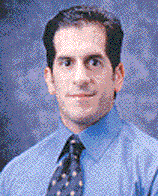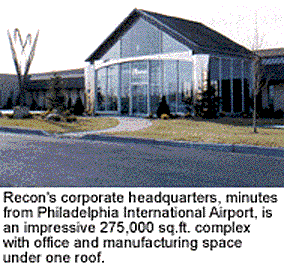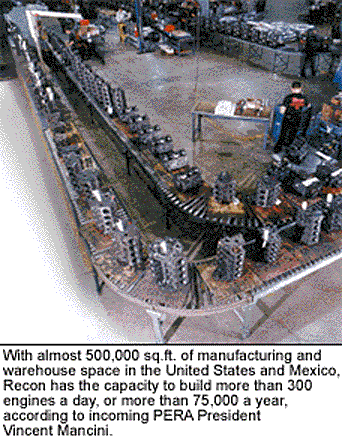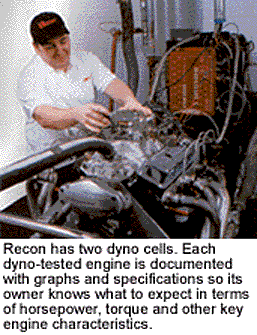
You might think that a popular rock band would have nothing to contribute to an engine remanufacturer. You might think the best way to make a profit is to slash expenses by all means necessary. Or, you might think things would be better if your customer would just see your side of the story for once.
If you think these things, you’re not Vincent Mancini, CEO of Recon Automotive Remanufacturers Inc. Otherwise, you would realize how wrong you are and how important it is to attend this year’s Production Engine Remanufacturers Association (PERA) convention in Whistler, British Columbia, Canada.
Mancini, incoming president of PERA, is looking to lead his business – and his association – into a stronger, more profitable future. His methods may be viewed as unorthodox by some, but his enthusiasm is contagious.
"The rock group Van Halen may not have been thinking of PERA when they wrote the song ‘Right Now,’" says Mancini, "but I sure do when I hear it. The words to the song are the perfect inspiration for every member of PERA in 2001."

The lyrics from Van Halen’s song encourages listeners to "catch your magic moment" in life and not to wait until an opportunity has passed. "Do it right here and now, it means everything," say the lyrics, an attitude Mancini subscribes to wholeheartedly.
Yes, this is the time to grab as much the momentum as we can in our businesses and ride it to greater sales and profits," says Mancini.
A self-admitted "non-technical" guy, Mancini nonetheless has the background to support both the production part of the business and the business side of producing engines. His father, Armand Mancini, was PERA Engine Remanufacturer of the Year in 1997. The senior Mancini started his business in 1964, buying used parts and distributing them to garages within Philadelphia.
In 1973, he founded Recon as a remanufacturer of automotive starters and alternators. Vincent Mancini says this early beginning allowed Armand to see the vast need for quality remanufactured automotive components. By 1980, industry demand brought about expansion of the original 20,000 sq.ft. facility to accommodate crankshaft and cylinder head remanufacturing, which ultimately led to the remanufacturing of complete engine assemblies.
Growth continued, and the Mancini family responded by constructing a modern 80,000 sq.ft. location, along with the machinery, to support the growing demand for Recon’s short and long block engine assemblies. This new location would eventually house 200 employees, with production exclusive to remanufactured engines, cylinder heads and crankshaft kits.
"We thought that much space would be heaven," recalls Vincent Mancini. "We figured we’d build 40 to 50 engines a day there and that would be about it."
However, in September of 1995, after continued, steady growth and reinvestment, Recon moved its corporate headquarters into a 276,000- sq.ft. complex near Philadelphia International Airport, keeping the former building for tear-down and cleaning of cores.
In addition to its move to a new headquarters, Recon began emphasizing its focus on quality, especially with regard to ISO 9000 and QS-9000 standards. "We were really working to build a quality product, making sure our customers were getting what they needed," explains Mancini. At the same time, Recon made a concerted push to have its employees pass ASE testing. According to Mancini, once the first certificate was on the wall, other employees were eager to follow suit.
In the winter of 1998 Recon expanded its manufacturing to Aguascalientes, Mexico (Recon South). Recon South was designed to be a focused factory and increase capacity by the machining of blocks, heads and cranks of Chevy 350s, 305s and 4.3Ls. The facility is approximately 50,000 sq.ft. and employs more than 80 team members.
Last winter, Recon opened another 50,000 sq.ft. facility for engine remanufacturing in the Los Angeles, CA, area (Recon West).

"Recon West is strategically advantageous to our company and our customers," says Mancini. "This new facility was also designed to be a focused factory that would specialize in import engines such as the Toyota 22R and other special, low volume engines. In addition, the facility can inventory 1,500 engines of all types for distribution for quicker deliveries to our customers."
Although production volume is important at Recon, what is foremost in customer satisfaction is producing the finest replacement engines available, says Mancini. The objective at Recon is to meet or exceed the quality and performance of original equipment engines, and by continually investing in the latest technology, Recon can ensure exact OEM engine specifications are achieved. Mancini says he is proud of the way Recon has adapted to a changing industry since he began his career with the company as a summer intern in the early 1980s.
Change isn’t always easy, Mancini explains, a fact he can attest to after taking over as CEO of Recon in 1996. "When I was named CEO, I restructured the company. It was a difficult time for some, but in any family business, the bigger you get the more you need accountability."
Under Mancini’s leadership, Recon sales increased by 25 percent in his first year as CEO. Since 1996, Recon has grown to be recognized as one of the largest remanufacturers of engines for passenger cars, light trucks and marine applications in the United States. Sales have increased from approximately $10 million to $58 million annually. The number of employees has doubled to 600.
The Recon facilities encompass almost 500,000 sq.ft. of manufacturing and warehouse space in the United States and Mexico. And, rather than reaching the supposed limit of 40-50 engines per day, Recon has the capacity to build more than 300 engines a day, or more than 75,000 a year.
PERA Potential
As he prepares to take over as president of PERA, Mancini says he is not discouraged by "fair-weather leaders" who talk about a slowing economy or have a pessimistic outlook for the industry and the association. The time is right, he says, to take steps to actually increase business and profits.
"We need to put the customer first," says Mancini. "Remember, there is only one boss – the customer. The customer can fire everyone in your company, from the chairman on down, simply by spending his money elsewhere."
Second, says Mancini, shops must zero in on the cost of doing business. But this doesn’t necessarily mean slashing expenses just to improve the bottom line. "We need to understand our cost basis as well as ways to reduce costs without sacrificing quality," he explains.
"And third, ‘Catch Your Magic Moment’ means creating a business culture – both internally and externally – that is customer-driven. Specifically, we must raise our level of teamwork and communication with each other, department to department. Without proper dialog internally, how can we hope to achieve effective communications with our customers?"
Because of the networking possibilities offered by PERA, Mancini feels association membership is a critical business tool. "It’s a perfect place for members to share ideas and exchange business practices. You can’t put a dollar figure on its value – it’s priceless to be able to do that."

During his tenure as president, Mancini says that two of the four phases of the much anticipated SourcePERA program will be introduced. Phase 1 will be the release of the Core ID portion in a Windows database along with the option to distribute that information. The second phase will be the introduction of the electronic bill of materials for suppliers and other informational systems.
"It’s all pretty exciting stuff," exclaims Mancini. "It’s nothing new that I’m responsible for, necessarily, but it just happens that while I’m president I’ll get to see them completed."
Mancini believes that PERA has a great deal of growth potential, but perhaps not in the traditional sense of adding new member companies. "This is a slow-growing industry, so the real growth may occur with manufacturers coming in through the SourcePERA program. We’ll probably also see more interest from crankshaft and cylinder head rebuilders, especially those who do them in production runs. I think we can all learn something from someone who is doing so much volume in a production run."
Growth is expected not only in numbers but also in activity. Mancini says he hopes current member companies will bring additional people to meetings and encourage more active involvement. After all, the association is there to serve a very specialized audience.
"What’s great about PERA is that we can be very specific with our goals," says Mancini. "We don’t have to be all things to all people – we can tailor our programs to meet the needs of the members."
Mancini believes that Recon’s quality policy, "The Best Remanufactured Engines and Parts, Guaranteed!" demands a constant commitment to adding value to every operation performed. "We choose never to be satisfied, and to continually search for improvements in our products and services," he says.
Likewise, he hopes his theme of taking action and seizing opportunities will inspire other PERA members to work with their customers to create a positive attitude. "We’ve done it in our shop," he concludes. "‘Right here, right now,’ we need to do it within the industry."













